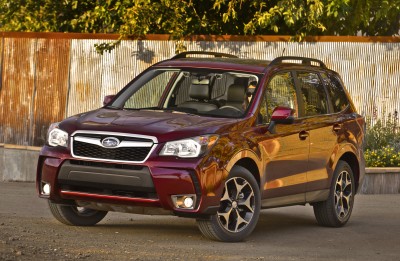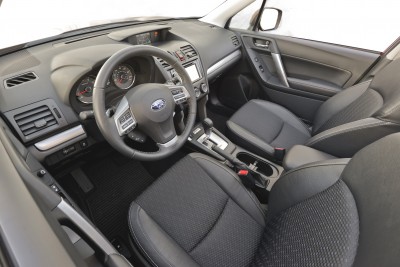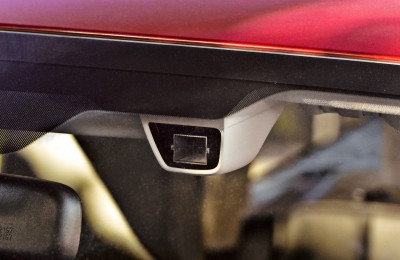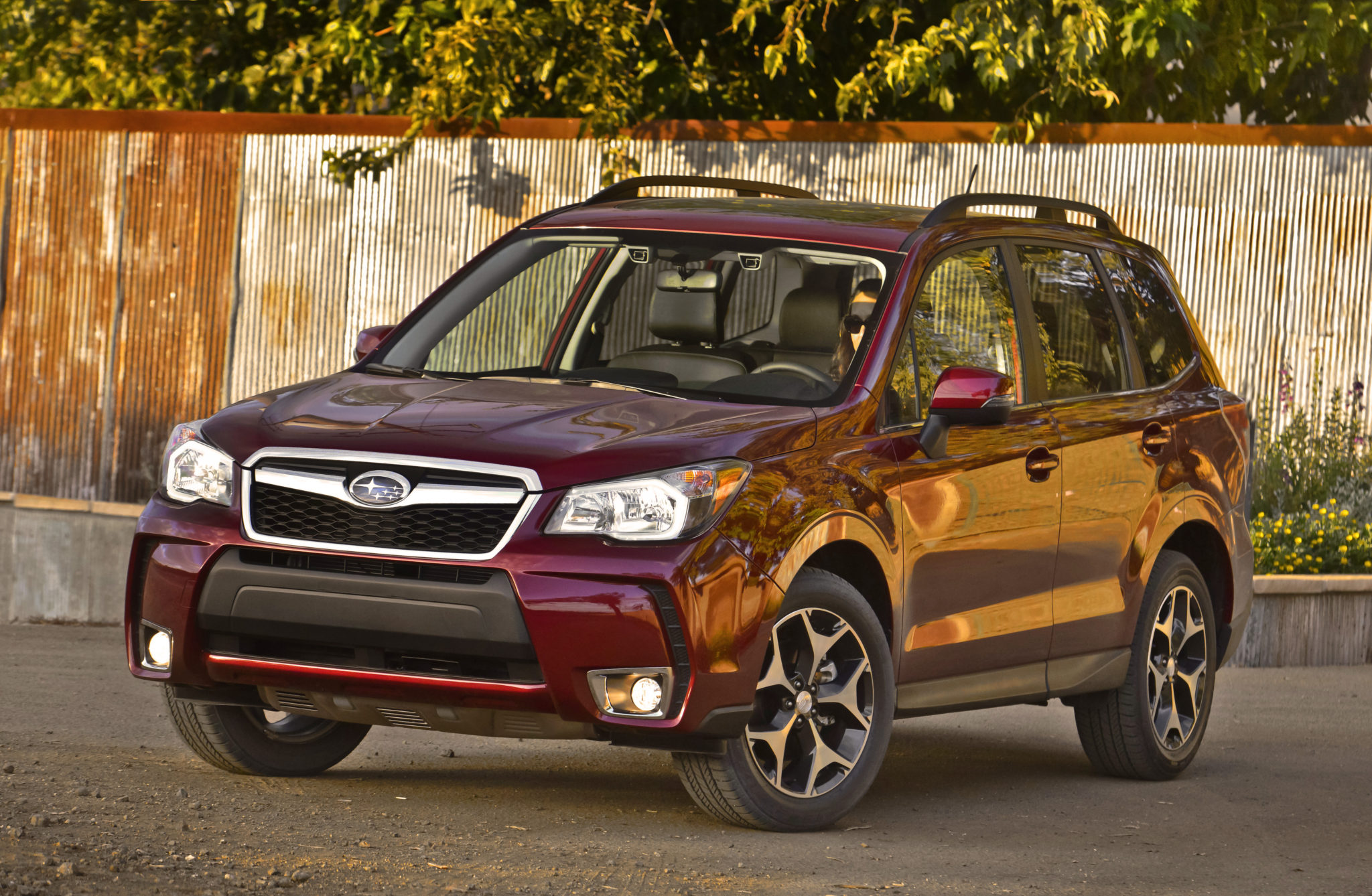 Subaru’s most famous wagon is the Outback. Launched in the ‘90s with catchy ads featuring Crocodile Dundee’s Paul Hogan, the car hit during the rise of the SUV boom. It didn’t hurt that it found popularity with a dedicated bunch of lesbians in the northeast, causing Subaru to reach out to our community like no other automaker. All great, but that’s not the car we’re reviewing here. Meet the Outback’s crossover sibling, the Forester.
Subaru’s most famous wagon is the Outback. Launched in the ‘90s with catchy ads featuring Crocodile Dundee’s Paul Hogan, the car hit during the rise of the SUV boom. It didn’t hurt that it found popularity with a dedicated bunch of lesbians in the northeast, causing Subaru to reach out to our community like no other automaker. All great, but that’s not the car we’re reviewing here. Meet the Outback’s crossover sibling, the Forester.
Subaru’s compact crossover has much of what makes the Outback so popular, but in a high-riding, super boxy package. Looking like the box in which a Jeep Cherokee arrived, Forester shines with chrome grillwork, 17” alloys, chiseled hood, and thick gray lower body cladding. Much of the Forester’s height is an illusion, but it looks tough enough to tackle Mount Everest or survive a marriage equality protest.
 Riding inside, passengers will be comfortable and safe. Forester’s interior is simple, but well-made — kinda like the home décor at Target. Heated leather seats, a thick, leather-wrapped, three-spoke steering wheel, large analog gauges, and roomy cubbies in the doors and console seem like they would last forever. Dual zone automatic climate control blows frigid air and the huge sunroof would provide a great place to view wildlife (glittered or otherwise).
Riding inside, passengers will be comfortable and safe. Forester’s interior is simple, but well-made — kinda like the home décor at Target. Heated leather seats, a thick, leather-wrapped, three-spoke steering wheel, large analog gauges, and roomy cubbies in the doors and console seem like they would last forever. Dual zone automatic climate control blows frigid air and the huge sunroof would provide a great place to view wildlife (glittered or otherwise).
For enhanced safety, add Subaru’s EyeSight system to your Forester. Using twin “stereo” cameras positioned above the rearview mirror, it alerts drivers with lane departure, adaptive cruise control, and emergency braking systems. If it detects an imminent collision, and you don’t react, it will – applying brakes to mitigate the impact.
Harman/kardon speakers sound great, but getting sound out of them can be difficult. There’s no tuning knob. So, you either slow-beep your way from say, Elvis Radio Channel 19 to Out Q Channel 109 in the time it takes to meet the perfect guy or use the voice button on the steering wheel. The disembodied voice is quite polite as she calls out, “One-one-five”. Just give me a darned knob! Fortunately, the rest of the Forester is much better.
 Behind the flashy grille is a standard 170 horsepower 2.5-liter horizontally-opposed “Boxer” four-cylinder engine. As in a Porsche, the key advantage of a boxer configuration is a compact engine that puts weight low in the chassis for improved handling. Choose between six-speed manual or continuously-variable automatic transmissions, the latter delivering 24/32 mpg city/highway. A 250 horsepower 2.0-liter turbocharged engine is available if gravel-churning rally drives are in your plans.
Behind the flashy grille is a standard 170 horsepower 2.5-liter horizontally-opposed “Boxer” four-cylinder engine. As in a Porsche, the key advantage of a boxer configuration is a compact engine that puts weight low in the chassis for improved handling. Choose between six-speed manual or continuously-variable automatic transmissions, the latter delivering 24/32 mpg city/highway. A 250 horsepower 2.0-liter turbocharged engine is available if gravel-churning rally drives are in your plans.
If they are, Subaru’s Symmetrical All-Wheel-Drive system is ready. With the exception of the BRZ sports car, every Subaru comes with AWD. Torque is automatically shifted end-to-end and side-to-side to achieve the best traction. The system is sweet on slick surfaces, but also makes carving up backroads a hoot. The Forester is also available with X-Mode, which modulates AWD and Hill Descent Control (HDC) to best tackle slippery hills.
 One has to admire the goodwill Subaru throws in our direction. It feels good to buy a vehicle from companies that sincerely care about you. Better yet, excepting the infernal touchscreen, Forester is a very good ride. Considering competition like the Mazda CX-5, Ford Escape, Jeep Cherokee, Honda CR-V, and Toyota RAV4, it better be. Prices start at $21,995, but our test vehicle came to $33,220, without the turbo engine.
One has to admire the goodwill Subaru throws in our direction. It feels good to buy a vehicle from companies that sincerely care about you. Better yet, excepting the infernal touchscreen, Forester is a very good ride. Considering competition like the Mazda CX-5, Ford Escape, Jeep Cherokee, Honda CR-V, and Toyota RAV4, it better be. Prices start at $21,995, but our test vehicle came to $33,220, without the turbo engine.
2013 Subaru Forester
Five-passenger, AWD Crossover
Powertrain: 170hp 2.5-liter H4, CVT automatic transmission
Suspension f/r: Ind/Ind
Wheels: 17”/17” alloy f/r
Brakes: disc/disc fr/rr with ABS
Must-have features: Style, performance
Fuel economy: 24/32 mpg city/hwy
Assembly: Japan
Base/as-tested price: $21,995/33,220

Subaru dashboards are heinous.
Agreed! Great cars, but interiors could use a designer’s touch.
Are they EJ25s, by any chance?